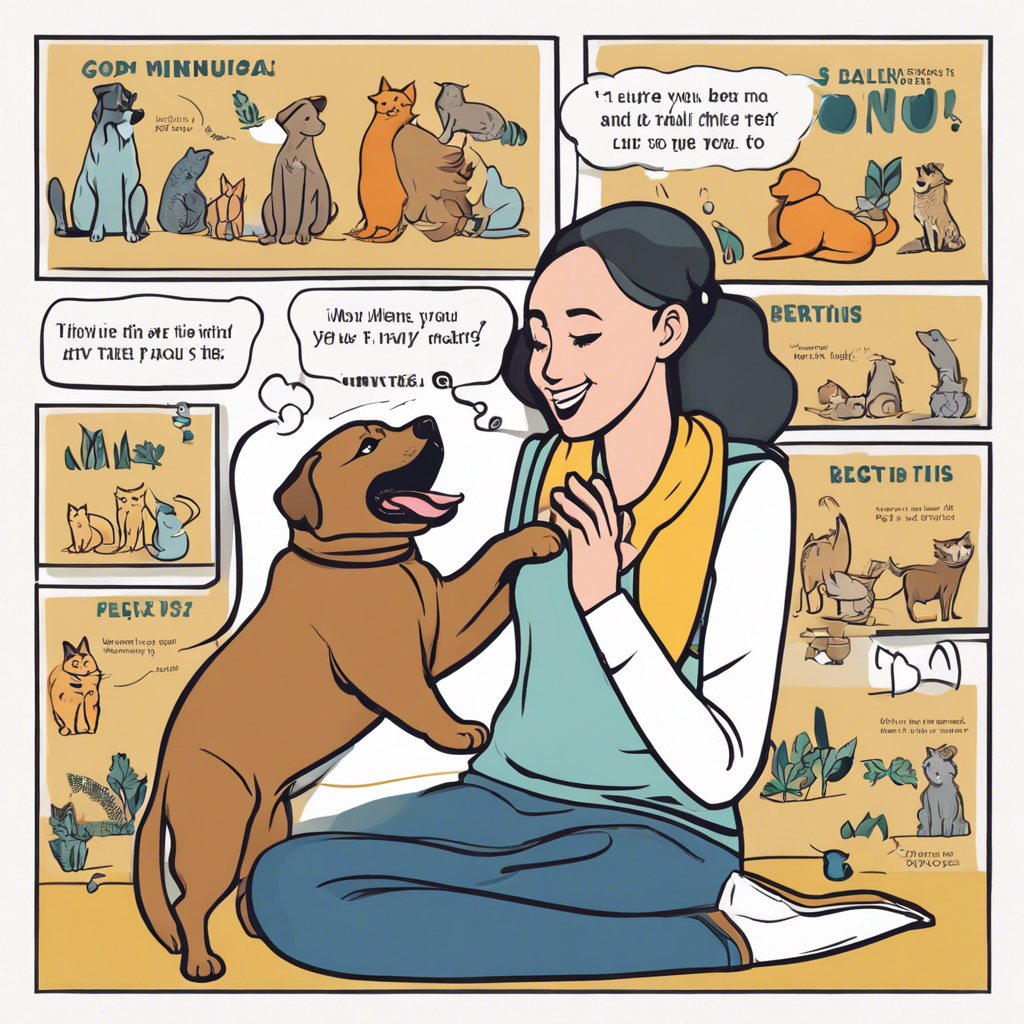Pets are beloved companions, and as their guardians, we strive to provide them with the best care and understanding. Communicating with our furry friends may seem like a challenging task, but paying attention to their body language can reveal a wealth of information about their emotions and needs. From the subtle positions of their tails to the direction of their paw raises, our pets express a myriad of feelings and intentions. Understanding these cues helps us build a stronger connection and ensure their overall well-being.
For example, a dog’s body language can indicate a range of emotions, from happiness and excitement to fear and aggression. A relaxed and happy dog may approach you with a loose body posture, a gently wagging tail, and a playful, open expression. They may also invite you to play by performing a playful bow with their front legs outstretched and their hind end raised. On the other hand, a fearful or aggressive dog may display stiff body language, with their tails tucked between their legs and their ears flattened against their head. They may also raise their hackles, the fur along their back, to appear larger and more intimidating.
Context is also crucial when interpreting pet body language. For instance, a dog may bark excitedly and jump up on its owner when they return home, appearing aggressive to the untrained eye. However, the dog’s entire body wiggles with excitement, indicating a joyful greeting rather than aggression. Similarly, a cat’s body language can vary depending on the situation. A contented cat may approach you with a relaxed, confident stride, rubbing its head and body against your legs to mark you with its scent and show affection.
Cat body language often includes subtle cues, such as the direction of their tails and the position of their ears and whiskers. An upright tail with a hooked end generally indicates a friendly greeting, while a puffed-up tail signals fear or aggression. Cats also use their ears to communicate; forward-pointing ears show attentiveness, while flattened ears against the head indicate fear, aggression, or defensive posturing.
Understanding these subtle cues can help us provide better care for our pets and strengthen the bond we share. It enables us to recognize their emotional states and respond appropriately, ensuring their comfort and happiness. Additionally, being adept at reading animal body language can help prevent potentially dangerous situations, such as inadvertently approaching an anxious or aggressive animal.
Interpreting body language is a skill that takes time and dedication to master, but with patience and observation, any pet owner can become adept at understanding their furry companion’s unspoken language. Spending quality time with your pet, observing their unique behaviors, and recognizing patterns in their body language will help you better understand their individual personalities and quirks.
To enhance your understanding, consider seeking guidance from professional resources, such as certified animal behaviorists or reputable books and websites dedicated to pet care. Shelters and rescue organizations often have valuable information on their websites as well. Their expertise can provide insight into the nuances of pet body language, ensuring that you’re well-equipped to interpret the unspoken words of your beloved companion.
Remember, each pet is unique, and their body language may vary depending on their breed, personality, and individual history. By taking the time to understand their specific cues, you’ll develop a deeper connection with your furry friend, leading to a happier and healthier life for both of you. Together, you can navigate the world, enjoying each other’s company and the unbreakable bond forged through love and understanding.
So, the next time you’re curious about what your pet is trying to tell you, take a moment to observe their body language, and you just might find the answer! Their unspoken words speak volumes, and with a little practice, you’ll become fluent in the language of their love and trust. Understanding pet body language opens up a whole new world of communication and connection with our beloved furry companions.
We hope this article provided you with valuable insights into interpreting your pet’s body language. For more informative and entertaining content, be sure to follow our page and explore the exciting world of pet ownership!
